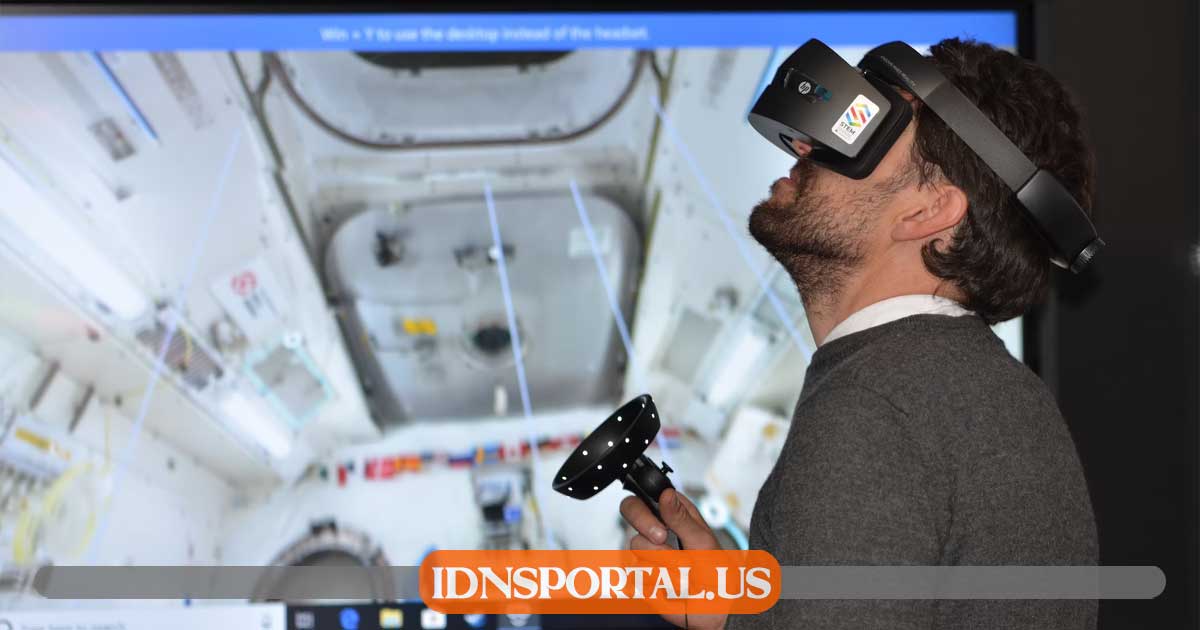Right Now, collaboration has become an integral part of many aspects of our lives, and industrial training is no exception. With the advancement of technology, a new and exciting way of learning emerges: the collaborative environment in virtual reality, but what is the collaborative environment? How does it apply to virtual reality? And what are the benefits it offers for industrial training?
What is the collaborative environment?
The collaborative environment is a space where several people can work together simultaneously, regardless of their physical location. In this environment, participants can communicate, share information, and collaborate in real-time to achieve a common goal. Traditionally, this has been achieved through digital tools such as email, video conferencing, and project management systems.
What is collaborative virtual reality?
Collaborative virtual reality allows users to interact and collaborate in an immersive virtual environment. Instead of simply viewing content on a screen, participants can immerse themselves in a shared virtual environment and work together as if they were physically present.
This technology uses virtual reality headsets and other devices to create an immersive experience that stimulates multiple senses, allowing users to explore, interact, and learn more effectively.
Benefits of training in collaborative environments in virtual reality
Training in collaborative environments in virtual reality offers a series of significant benefits for the industry. Let’s look at some of them:
- Immersion and realism: Virtual reality creates an immersive environment that simulates real-life situations and scenarios. This allows participants to experiment and practice skills in a safe and controlled environment, without risk of harm or accidents.
- Real-time collaboration: Collaborative environments in virtual reality facilitate collaboration between geographically distributed teams. Participants can interact, communicate, and work together as if they were in the same physical location, improving efficiency and productivity.
- Access to experts and resources: Collaborative virtual reality offers the ability to connect with experts and access specialized resources remotely. This means that participants can receive instant guidance and feedback from experienced professionals, enriching the learning experience.
- Cost savings: Training in collaborative environments in virtual reality eliminates the need for travel and investment in expensive equipment and materials. This reduces expenses associated with training and allows companies to optimize their financial resources.
Practical applications of collaborative virtual reality in industrial training
Collaborative virtual reality has a wide range of applications in industrial training. Some examples include:
Security simulations
Workers can experience high-risk situations in a safe virtual environment, learning how to deal with emergencies and safety practices without being in danger.
Technical skills training
Employees can practice specific technical skills, such as operating complex machinery or performing delicate procedures, in a realistic virtual environment.
Collaboration in product design and development
Teams can work together on product design and development projects, viewing and modifying virtual prototypes in real-time.
Team building and leadership
Participants can develop teamwork and leadership skills through interactive activities and role-playing games in virtual environments.
Tools and technologies for training in collaborative environments in virtual reality
For training in collaborative environments in virtual reality, there are several tools and technologies available on the market. These include:
- Collaboration platforms: There are specific platforms that allow users to interact and collaborate in shared virtual environments, such as AltSpaceVR and Mozilla Hubs.
- 3D design and modeling software: 3D design and modeling software. Allows users to create virtual environments. Customize them according to your needs and training objectives.
- Virtual Reality Devices: Virtual reality headsets, such as the Oculus Rift, HTC Vive, and PlayStation VR, are key devices for experiencing collaborative virtual reality.
Examples of implementation of collaborative environments
Several companies and organizations are already implementing collaborative virtual reality environments in their training programs. Some notable examples include:
- General Electric: Uses collaborative virtual reality to train its maintenance technicians in gas turbine repair and maintenance.
- Ford: Uses collaborative virtual reality to simulate manufacturing situations and improve the efficiency of production processes.
- Airbus: Uses collaborative virtual reality to train its staff in aircraft construction and maintenance, improving the precision and safety of operations.
The collaborative environment in virtual reality is transforming the way industrial training is carried out. This combination of technologies offers significant benefits, such as immersion, real-time collaboration, access to experts, and cost savings.
At TechTrianlges, we are committed to providing innovative and effective training experiences. If you are interested in discovering the potential of training in collaborative environments in virtual reality, we invite you to explore our course and program options. Immerse yourself in a virtual world, learn interactively, and collaborate with other participants in real time.








